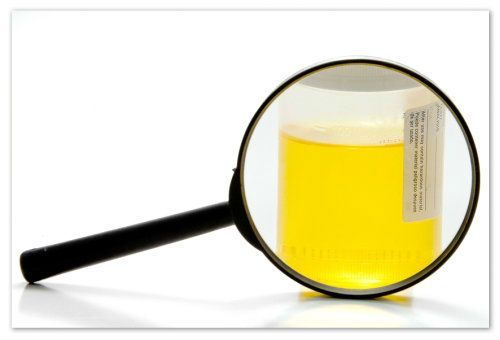Urine is one of the biological liquids of organism, it is formed in the kidneys, and is excreted via the ureters, bladder and urethra. In order to control the amount of urine, the term was entered diuresis. I.e. this is the amount of urine, which contributed for people specifically designated period of time.
What should be the volume of urine?
Normal urine output is at least half a liter. It is under this condition, the body is able to get rid of products of metabolism. To drain as much urine, a person needs to drink at least eight hundred milliliters in 24 hours.
Normal person should drink 1.5 to 2.5 liters of fluid in 24 hours. Of course, these figures are very conditional, because there is a big difference between the needs of the body adults and a child. If the volume of fluid that is used during the day, reaches the desired number, the daily urine output in normal ranges 800-1500 ml, but the minute amount of 0.55-1 ml.
Phase urine output
Urine is produced in renal tissue, and more specifically in the nephron.

Urine formation can be divided into three phases:
- filtration phase (the filtering of the primary urine);
- reabsorption or phase reverse suction;
- the secretion of the tubules.

The amount of urine depends on the age of the person
In the first phase, the filtering of those compounds which have low molecular weight. They brought the blood to the vascular glomerulus. Due to the pressure difference is the sorting of substances in primary urine fall into the water, glucose, vitamin compounds, creatinine and more. But there are not proteins and blood cells.
Reabsorption is the process of reverse suction of the substances in the blood, it passes into the tubular system. There is a fence needed by the body substances. The distal tubules are responsible for the secretion of the essential element potassium. Its secretion is under the influence of aldosterone, a hormone produced by the adrenal glands.
In the secretory phase there is a release of toxins, the cells of the tubules of the kidney are removed from the capillary network surrounding the tubular system, into the cavity of the nephron, all unwanted substances.
In the human body per day is formed about 150 to 180 liters of primary urine.
Types of diuresis
Diuresis distinguish between night and day. The ratio in a healthy person is inclined in the direction of day. The predominance of night diuresis above day is called nocturia.
Depending on what the content of osmotic substances in the urine, excrete osmotic diuresis (contains many osmotically active compounds), antidiuresis or a negative diuresis (high concentration of compounds and a small amount of the liquid withdrawn relative to the norm), and water (lots of urine output and little osmotically active substances).
If there is a water diuresis, the urine becomes hyperosmolar

In the absence of pathology increases giperosmolarnosti by drinking large amounts of water. And in cases it is observed, in particular, in the case of diabetes insipidus, alcohol dependence, kidney failure.
Osmotic diuresis is a condition in which urine appears a lot, it stands out and many active substances. This happens if the body gets a lot of simple sugars or diuretics. This pathology is often accompanied by people with diabetes, chronic renal failure, as well as the abuse of osmotic diuretics.
In that case, if the excretion of urine will increase daily for some reason to 3,000 ml and more subject to adequate drinking regime, this phenomenon is called polyuria. If excreted urine less than 400-500 ml in 24 hours, we are talking about took place. Anuria is a condition in which the urine does not flow into the bladder.
We must highlight forced diuresis. About it you can read more in this article. Here we note that forced diuresis is resorted to only in case of pathological conditions and represents a stimulation of the urinary system to detoxify due to the large amount of urine.
Stimulation can be conducted diuretics, a large amount of fluid. The increase derived toxins leads to the relief of the patient.
Why can occur pathology diuresis?
It should be noted that by pathological types include osmotic antidiuresis and water, as well as the dominance of night over day.
Such a situation could develop in the following cases:
- infection (glomerulonephritis);
- pathology blood supply (atherosclerotic process, shock);
- a failure in the normal excretion of urine (stones);
- toxic renal damage and severe disease (sepsis);
- congenital anomalies (polycystic kidney disease).
The following discussion describes the types of diuresis.
Minute diuresis
Minute diuresis (further On) – this is the amount of urine that one person produces in 60 seconds. In order to determine, in medicine, the use of a special sample of Rehberg. That’s why so many use the term minute D. in a sample of Rehberg.
This figure is used when keeping score important indicator of GFR (glomerular filtration rate). For this withdrawn special formula, which can be used to determine a quantitative indicator of the kidneys.
The formula for calculating minute diuresis
The execution algorithm of the sample are described below. Bites in the morning on an empty stomach a half-liter of clean water. The first portion of urine in the morning goes down the toilet, and after collecting the urine. The date on the first manipulation, the blood on an empty stomach should be taken from the vein. Later in the day the urine is collected in a clean container with fixed amount of it in grams and time of urine excretion.
Last is to go to the toilet 24 hours after start of the test. Next, the molded 50 ml of biological fluid in a container and take to the lab. The rest of the urine volume record, noting their weight, height and weight.
Hourly diuresis
This is a very important indicator. All the patients in a grave condition performed catheterization of the bladder, closely tracking the numbers urine. If the hour displayed less than 15-20 ml, the doctor concludes that the circulating blood volume is small, and should increase the intensity of infusion (the infusion of fluids into the bloodstream to compensate for blood loss).
For this reason, the values of hourly diuresis is extremely important. 30-50 ml per hour is the norm for hourly D.
Daily diuresis
About this you can read in this article. Here are shown General information. So, this kind of urine output, as mentioned earlier, represents the amount of urine, derived by the person during the day. Daily. it is possible to judge the functioning of the kidneys. In the laboratory it can be identified using a sample of General, Nichiporenko, Adiss-Chukovskogo.
Pathological types of daily diuresis
Polyuria is defined on the basis of the increased discharge of urine. Causes the increasing urine output can be divided into physiological (pregnancy and high water consumption) and pathological (sarcoidosis, kidney stones, heart failure and or kidney disease, pyelonephritis, tumors, etc.).
It should be noted that a possible cause are also diuretics. The only initial manifestation of polyuria is of urine a lot, but the secondary can be dehydration, cramps, and clear symptoms of the disease, against which evolution of this pathology.
Polyuria is one of the variant pathology
Oliguria has many factors in its development. Let us mention the principal ones: vomiting, diarrhoea, sepsis, heart disease, burns, infections, vascular lesions, embolism kidney, glomerulo – and pyelonephritis, and kidney stones. The primary symptom is a small amount of urine.
Anuria or absence of urine may develop in the blockage of the urinary tract stones, tumors. Also in heart and kidney failure, poisoning by heavy metals and salts.
Symptoms include drowsiness, weakness, shortness of breath, vomiting, diarrhea, pain in the lumbar region, a peculiar smell from the mouth.
Treatment of pathological kinds of urine output is carried out after a thorough examination and accurately determine the cause. Urine is one of the most important biological fluids. Its informative value cannot be overstated. Monitoring of urine output and measurement of its volume gives the opportunity to evaluate the work of the urinary system, as well as the General condition of the body.




Wow! You certainly covered everything in your post. I want to read more from you. Do you run any other blogs?